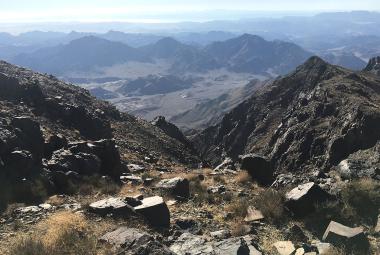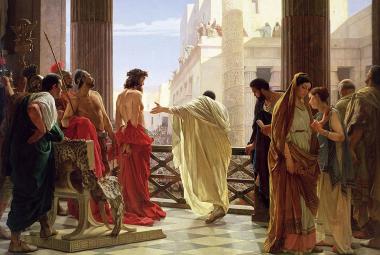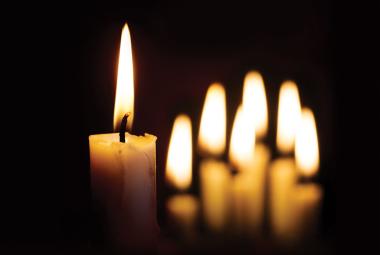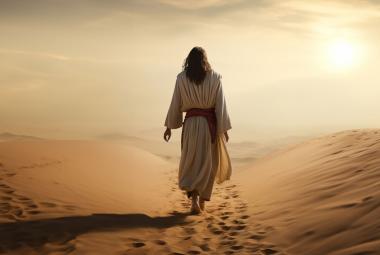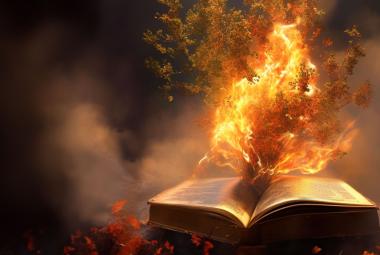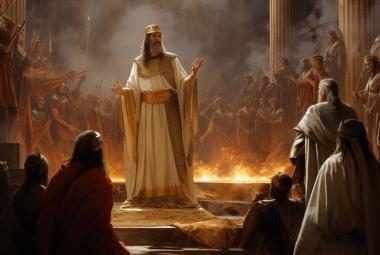At sundown on August 8th, our Jewish friends will observe Tish’ah b’Av (“The Ninth Day of Av”). This is a special day of mourning, since on this day four major tragedies occurred...
Tish’ah b’Av
1) On this day the First Temple, built by Solomon, was destroyed by Nebuchadnezzar, and the Babylonian captivity began;
2) On this day the Second Temple, the one expanded by Herod and the one which was standing during Messiah’s ministry, was destroyed by the Romans in 70 A.D., precisely as Jesus predicted (Luke 19:43, 44);
3) On this day Betar, the last fortress to hold out against the Romans during the Bar Kochba revolt, fell in 135 A.D.; and,
4) Jewish tradition also regards this date as the date the Children of Israel were prohibited from entering the Promised Land (Numbers 14:34).
It is a strange coincidence of history that both Nebuchadnezzar in his day, and the Romans in theirs, destroyed the respective temples on the same date on the Jewish calendar. And, as the rabbis remind us, “Co-incidence is not a kosher word.” There are no “coincidences” in God’s kingdom.
Joy in Mourning?
Tish’ah b’Av is, thus, a day of intensive mourning for the destruction of the Temple and for Jerusalem. But coexisting with this sense of grief is a subtle sense of joy. The day is also to include joy for the future restoration of the Temple and the coming of the Messiah.
The Sabbath before Tish’ah b’Av is called Shabbat Hazon, the Sabbath of Vision, because of the Scripture portion for that day:
For the vision is yet for an appointed time, but at the end it shall speak, and not lie: though it tarry, wait for it; because it will surely come, it will not tarry.
Habakkuk 2:3
(In fact, this very verse is then followed by the one that Paul uses as his foundation for his “trilogy” epistles on “the just shall live by faith”: Romans 1:17; Galatians 3:11; and Hebrews 1:38.)
The ultimate focus of this special observance is, of course, the anticipation of the restoration of the Temple. Recitals include:
Tonight marks ____ years since the destruction of the Second Temple and as yet redemption has not come. Know ye that whoever has not been privileged to witness the building of the Temple, is regarded as having witnessed the destruction within his own lifetime.1
Following this, a solitary candle is lit and the recitation of the Book of Lamentations is begun. Yet, despite the solemnity of the fast, a subtle sense of joy is in the proceedings due to the anticipation of the rebuilding of the Temple.
The Prophetic Scenario
One of the most exciting events on our prophetic horizon these days is, of course, the fact that the preparations for this next Temple have begun.
The Temple Institute in Jerusalem has fabricated most of the implements to serve in the Temple. One can visit and view the headdress and breast-plate (with the 12 precious stones) of the high priest. Special looms are weaving the linen for the priestly vestments. Scientists are scanning the world for the correct marine snails to yield the Levitical blue and royal purple dyes for the garments.
Several hundred young men are training in the Yeshivas (special schools) to serve as priests. (All of them, of course, must have Levi genes!)
Where is the Precise Location?
Despite the traditional view that the Muslim Dome of the Rock sits on the ancient Temple site, recent scholarship has cast doubts on this view.
Dr. Asher Kaufman’s research has suggested that both Temples actually stood 100 meters to the north. His publications initially caused quite a stir among the Christian community since that would place the Muslim structure in the “outer court,” the court of the Gentiles, as suggested from Revelation 11:1-2.
However, Tuvia Sagiv’s incisive research has indicated that the Temple more likely stood 100 meters to the south—between the Dome of the Rock and Al Aksa Mosque. Recent infrared photographic studies seem to imply that Tuvia is correct.2 This would still place the existing Muslim structures in “the outer court.”
These developments continue to be of intense interest to prophecy students. Jesus, John, and Paul all make reference to a rebuilt Temple standing prior to the Second Coming of Christ.3 It is going to remain a major subject of interest in the coming years as all this comes to a head.
But Where’s the Ark?
A related prophetic mystery is the current location of the Ark of the Covenant. [It should be borne in mind that the Ark is not essential: there was no Ark in the “Second” (Herod’s) Temple. It had already disappeared prior to the days of Nehemiah.]
There are many prevalent theories regarding its history: Was it taken by the Babylonians? Was it taken by Shishak, King of Egypt during his raid of Jerusalem?4 Was it hidden by Jeremiah on Mt. Nebo?5 Is it presently hidden under the Temple Mount?6 Or was it taken by Menilik, the offspring of Solomon and the Queen of Sheba, to Ethiopia during Solomon’s apostasy? (That is the official legend that has been included in Ethiopia’s Constitution.)
Most scholars dismiss the Ethiopian legend because the Ark reappears during the days of King Josiah.7 However, many overlook the possibility that the Ark may have arrived in Ethiopia by an alternative series of events that are implied in the Old Testament narratives.8
In order to protect the Ark from the atrocities of Manassah, who was trying to eradicate Judaism, the Levites apparently took the Ark into the protection of Pharaoh Necho, which then subsequently initiated a series of travels ultimately ending in Axum where it may still reside under guard today.
The Ethiopians believe it is their destiny to deliver their precious relic to the Messiah when He rules on Mt. Zion.
This may further unravel some puzzling aspects of the episode between Philip and the Ethiopian Treasurer recorded in Acts Chapter 8. This high official was sent to Jerusalem by Queen Candace on a special mission and was returning home confused. Was he sent to confirm a rumor of the Messiah’s arrival? Philip is dis-patched by the Lord to join him and explain the Isaiah passage he was reading which details the Messiah’s execution and His ultimate return.
(All these issues, and their background, will be dealt with in our new update of the Book of Acts, which started recently on K-Rations. See the ad below for details.)
What makes this entire situation even more significant is the ostensible role of the Mercy Seat, which may be destined to serve as the Throne when the Messiah rules on Mt. Zion.9 (This possibility will have to be treated in a subsequent article.)
It is, indeed, time for all of us to re-examine care-fully what the Bible has to say about these things. I believe we are being plunged into a period of time about which the Bible has more to say than any other period of history—including the time that Jesus walked the shores of Galilee or climbed the mountains of Judea. Stay tuned. It’s all coming, just like God said it would. He means what He says and says what He means. Let’s all do our homework.
Are you really ready for all this? There are no priorities more serious—for each of us! Pray about it.

